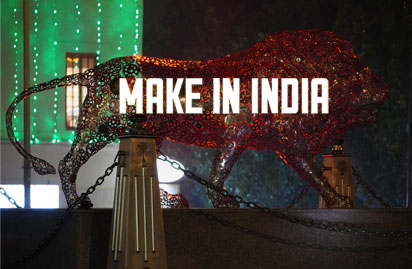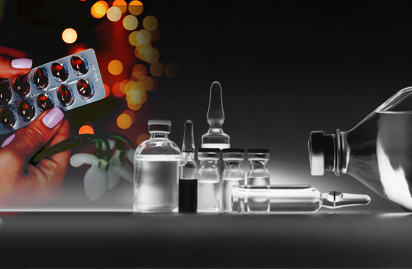India is a prominent and rapidly growing presence in global pharmaceuticals. India has contributed significantly to global healthcare by ensuring high quality, affordable and accessible medicines around the world. Occupying the position of the largest provider of generic medicines globally, India ranks third worldwide for production pharmaceutical goods and services. India is the only country with largest number of US-FDA compliant Pharmaceutical plants outside of USA.
The ongoing COVID-19 pandemic has shown the Indian pharmaceutical sector in good light recently. The Union Budget of 2021 set aside INR 124.42 crore for initiatives aimed at development of Pharmaceutical Industry in comparison with the Budget of 2020 which set aside INR 42.05 cr for the scheme. (200% increase). The amount under the scheme, according to Budget documents, will go towards providing production-linked incentives (PLI) to promote domestic manufacturing of critical key starting materials (KSM), drug intermediates, and active pharmaceutical ingredients (APIs).
Distinguishing features of the Indian Pharmaceutical Sector:
- India is the source of 60,000 generic brands across 60 therapeutic categories and manufactures more than 500 different APIs.
- The API industry is ranked third largest in the world contributing 57% of APIs to prequalified list of the WHO.
- The country is home to more than 3,000 pharmaceutical companies with a strong network of over 10,500 manufacturing facilities.
- The total market size of the Indian pharmaceutical industry is expected to reach USD130 Billion by 2030.
- 100% Foreign Direct Investment (FDI) is allowed under the automatic route for greenfield pharmaceutical.
- 100% FDI is allowed in brownfield pharmaceutical sector wherein 74% is allowed under the automatic route and thereafter through government approval route
Some of the recent developments in terms of investments in the Indian pharmaceutical sector are as follows:
- In December 2020, Piramal Pharma Solutions announced plans to invest INR 235 crore (USD 32 million) to expand its facility in Michigan, US, with additional capacity and new capabilities for development and manufacturing of APIs.
- In November 2020, Indian Immunologicals (IIL) commenced work on INR 75 crore (USD 10.17 million) viral antigen manufacturing facility in Genome Valley, Telangana, that will enhance its vaccine production capacity by 35% by October 2021.
- In November 2020, the Indian Institute of Technology (IIT) Bombay has stepped up research and development (R&D) amid COVID-19 and researchers are developing products such as a portable sterilisation device and germicidal cabinet; wheeled sterilisation unit, especially for hospitals; portable and rechargeable car sanitiser; eco-friendly sprays, and alcohol-free and bleach-free sanitisers.
- In October 2020, six generic drug makers, Dr. Reddy’s Laboratories, Zydus Cadila, Glenmark Pharmaceuticals, Torrent Pharmaceuticals, Hetero Drugs and Ackerman Pharma signed a deal with Hidalgo, a state in Mexico, to establish a large pharmaceutical cluster for production and logistics in Mexico.
- Affordable medicines under Pradhan Mantri Bhartiya Janaushadhi Pariyojana (PMBJP) achieved record sales turnover of INR 52 crore (USD 7.38 million) in the month of April 2020.
- In October 2019, Telangana Government proposed Hyderabad Pharma City with financial assistance from the Central government of INR 3,418 crore (USD 489 million).
Growth Drivers in the Pharmaceutical Sector:
- Innovation and R&D: To develop new complex generic drugs, supplemented by the New Drugs and Clinical Trial Rules, 2019 and the Atal Innovation Mission (a Government of India initiative with the objectives of entrepreneurship and innovation promotion via mentorship, competition etc.)
- Medical tourism: Quality services at marginal costs compared to US, Europe, and South Asia
- Infrastructure development: India has the highest number of US-FDA compliant plants outside the US
- Strong drug manufacturing: Expertise in low cost generic patented drugs and a movement towards end-to-end manufacturing
- Strong domestic demand: Launch of the National Health Protection Scheme, the largest government funded healthcare programme globally, as well as an economic growth-driven increase in healthcare spending
Reasons to Invest in India’s Pharmaceutical Sector:
- India's healthcare market may see a threefold jump in value terms to reach USD 372 Billion by 2022 with rising income, greater health awareness, increased precedence of lifestyle diseases and improved access to insurance.
- Ayushman Bharat is National Health Protection Scheme, which will cover over 100 Million poor and vulnerable families (approximately 500 mn beneficiaries) providing coverage up to INR 5 lakh per family per year for secondary and tertiary care hospitalization.
- Under the ‘Promotion of Bulk Drug Parks’ Scheme, the Union government aims to develop mega Bulk Drug parks in India in partnership with the States. The parks will have common facilities such as solvent recovery plant, distillation plant, power & steam units, and common effluent treatment plant.
- The presence of a skilled workforce as well as high managerial and technical competence is a source of attraction for private players.
- Pharma companies have already increased spending in the country to tap rural markets and develop better infrastructure.
- Under the PLI Scheme for Promotion of Domestic Manufacturing of critical KSMs/ Drug Intermediates and APIs, applications with committed investments of INR 4623.01 crore have been approved so far.
Following is the list of schemes and policies initiated by the Government of India listing the advantages of investing in the Pharmaceutical Industry in India:
Approval of the Production Linked Incentive Scheme for Pharmaceuticals by the Cabinet
The Union Cabinet approved the PLI Scheme for Pharmaceuticals over a period of Financial Year 2020-21 to 2028-29. The Scheme will benefit domestic manufacturers, help in creating employment and is expected to contribute to the availability of wider range of affordable medicines for consumers. The scheme is expected to promote the production of high value products in the country and increase the value addition in exports.
Total incremental sales of INR 2,94,000 crore and total incremental exports of INR 1,96,000 crore are estimated during six years from 2022-23 to 2027-28.
It is expected to promote innovation for development of complex and high-tech products including products of emerging therapies and in-vitro Diagnostic Devices as also self-reliance in important drugs. It is also expected to improve accessibility and affordability of medical products including orphan drugs to the Indian population. The Scheme is also expected to bring in investment of INR.15,000 crore in the pharmaceutical sector.
The scheme will be part of the umbrella scheme for the Development of Pharmaceutical Industry. The objective of the scheme is to enhance India's manufacturing capabilities by increasing investment and production in the sector and contributing to product diversification to high value goods in the pharmaceutical sector. One of the further objectives of the scheme is to create global champions out of India who have the potential to grow in size and scale using cutting edge technology and thereby penetrate the global value chains.
The salient features of the Scheme are as follows:Target Groups: The manufacturers of pharmaceutical goods registered in India will be grouped based on their Global Manufacturing Revenue (GMR) to ensure wider applicability of the scheme across the pharmaceutical industry and at the same time meetthe objectives of the scheme. The qualifying criteria for the three groups of applicants will be as follows-
- Group A: Applicants having Global Manufacturing Revenue (FY 2019-20) of pharmaceutical goods more than or equal to INR 5,000 crore.
- Group B: Applicants having Global Manufacturing Revenue (FY 2019-20) of pharmaceutical goods between INR 500 (inclusive) crore and INR 5,000 crore.
- Group C: Applicants having Global Manufacturing Revenue (FY 2019-20) of pharmaceutical goods less than INR 500 crore. A sub-group for MSME industry will be made within this group, given their specific challenges and circumstances.
Quantum of Incentive under the Scheme: The total quantum of incentive (inclusive of administrative expenditure) under the scheme is about Rs 15,000 crore. The incentive allocation among the Target Groups is as follows:
- Group A: Rs 11,000 crore.
- Group B: Rs 2,250 crore.
- Group C: Rs 1,750 crore.
Rate of incentive will be 10% (of incremental sales value) for Category 1 and Category 2 products for first four years, 8% for the fifth year and 6% for the sixth year of production under the scheme. While the rate of incentive will be 5% (of incremental sales value) for Category 3 products for first four years, 4% for the fifth year and 3% for the sixth year of production under the scheme.
Ayushman Bharat - National Health Protection Mission:
Ayushman Bharat - National Health Protection Mission will have a defined benefit cover of INR 5 lakh per family per year. Benefits of the scheme are portable across the country and a beneficiary covered under the scheme will be allowed to take cashless benefits from any public/private empanelled hospitals across the country. The beneficiaries under this scheme can avail benefits in both public and empanelled private facilities.
Other salient features of this scheme:
- To control costs, the payments for treatment will be done on package rate (to be defined by the Government in advance) basis.
- One of the core principles of this scheme is to co-operative federalism and flexibility to states.
- For giving policy directions and fostering coordination between Centre and States, it is proposed to set up Ayushman Bharat National Health Protection Mission Council (AB-NHPMC) at apex level Chaired by Union Health and Family Welfare Minister.
- In partnership with NITI Aayog, a robust, modular, scalable and interoperable IT platform will be made operational which will entail a paperless, cashless transaction.
Pradhan Mantri Bhartiya Janaushadhi Pariyojana (PMBJP):
To achieve the objective of making available quality generic medicines at affordable prices to all, ‘Jan Aushadhi Scheme’ was launched by the Department of Pharmaceuticals, Ministry of Chemicals & Fertilizers, Government of India in November 2008 across the county. Now, the ‘Jan Aushadhi Scheme’ has been revisited and renamed as ‘Pradhan Mantri Bhartiya Janaushadhi Pariyojana’ (PMBJP). The Scheme is being implemented through a registered society namely Bureau of Pharma PSUs of India (BPPI) which is working under the administrative control of Department of Pharmaceuticals, Ministry of Chemicals & Fertilizers, Government of India. The Product Basket of the scheme now covers more than 1250 medicines and 204 surgical & consumables in all major therapeutic categories such as Anti-infective, Anti-allergic, Anti-diabetics, Cardiovascular, Anti-cancers, Gastro-intestinal medicines, etc. As on 12.10.2020, 6634 PMBJP Kendras are functional in the country.
Objectives of the Scheme:
- To make available quality medicines consumables and surgical items at affordable prices for all and thereby reduce out of pocket expenditure of consumers/patients.
- To popularize generic medicines among the masses and dispel the prevalent notion that low priced generic medicines are of inferior quality or are less effective.
- Generate employment by engaging individual entrepreneurs in the opening of PMBJP Kendras.
Incentive Plan:Besides providing affordable quality medicines to the masses, the scheme offers self-employment opportunities. The Department has recently revised the incentive plan for Pradhan Mantri Bhartiya Janaushadhi Kendras owners, in which the incentive provided to the Kendra owners has been enhanced from existing INR 2.50 lakh to up to INR 5.00 lakh. Further, an additional one-time incentive of INR 2.00 lakh has been approved for stores opened in the specified area and/ or by 2 specified categories of persons.
The details of the incentive plan are as follows:
Normal Incentive:- The Kendras run by entrepreneurs of any class that are linked with BPPI through software will get incentive up to Rs. 5 lakh. The incentive will be given @ 15% of monthly purchase made from BPPI by these Kendra subject to a ceiling of Rs. 15,000/- per month up to the total limit of Rs. 5 lakh. It will also cover women, divyang, SC, ST & any entrepreneurs running 'Janaushadhi Kendra' in the aspirational district as notified by NITI Aayog & in the North-Eastern States.
This will apply to existing Kendras also whose existing limit of incentives of Rs. 2.50 lakh is fully disbursed. Further, it will also cover the Kendra opened in government premises to whom one-time grant of Rs. 2.50 lakh was disbursed. They will get an additional incentive of Rs. 2.50 lakh based on purchases made by them from BPPI as per other terms and conditions applicable to all JAKs. The one-time grant of INR 2.50 lakh to a Kendra opened in Government premises has been discontinued. These Kendras will also get a normal incentive as applicable to Kendras in private premises.
Additional Incentive:- For Kendras opened in backward areas mentioned as aspirational districts (backward districts) by NITI Aayog and in Himalayan, Island territories and the North-Eastern States, an amount of INR 2 lakh in addition to normal incentives as applicable is to be given to entrepreneurs as per followings:
- INR 1.50 lakh reimbursement of furniture and fixtures
- INR 0.50 lakh as reimbursement for computer, internet, printer, scanner, etc.
Special Incentive:- PMBJP Kendras run by women entrepreneurs, Divyang, SC, & ST gets an amount of INR 2.00 lakh as a special incentive in addition to normal incentives as applicable. This is to be given to entrepreneurs as per followings:
- INR 1.50 lakh reimbursement of furniture and fixtures
- INR 0.50 lakh as reimbursement for computer, internet, printer, scanner, etc.






